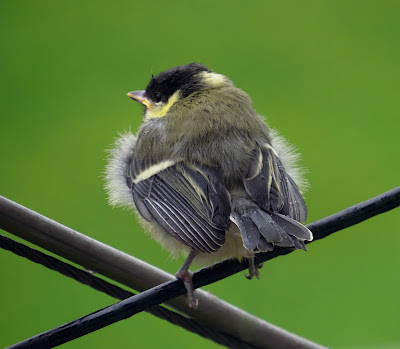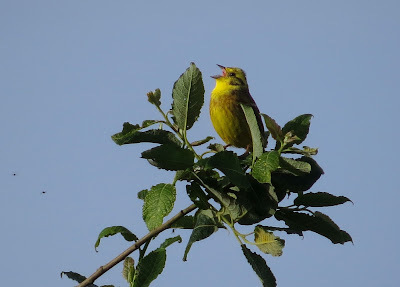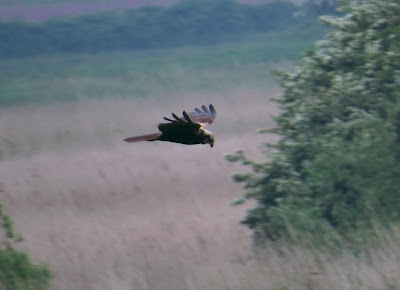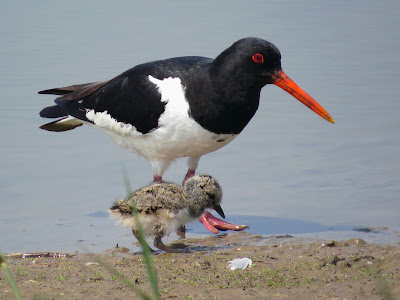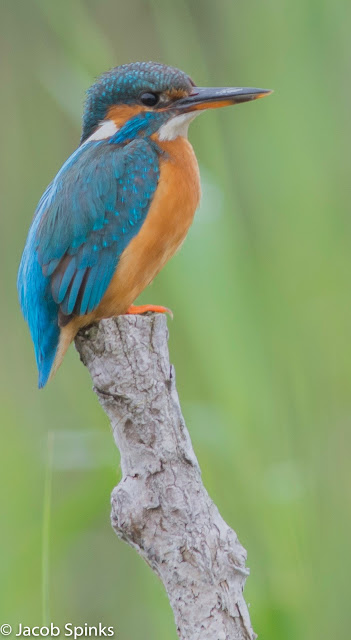Hello
The Swallow (Barn Swallow) is one of those iconic summer visitors we look forward to welcoming back every spring. And when they disappear in the autumn we know colder, shorter days beckon.
These days Swallows nest in close proximity to man and in fact it is unusual to find them nesting in anything other than a human-made structure. They make their own nests with a foundation of mud, and then line them with varying amounts of dry vegetation, animal hair and large feathers from other birds.
Locally traditional stables are the preferred structure (with or without animals) but of course there aren't enough stables to go around so they also nest in porches, car ports, a variety of barns, garages and awnings and locally I know of one site where they nest in brick-built dog kennels!
On a diet of insects, nestlings grow fast and some pairs in the British Isles (mostly in the south) manage to raise three broods during the relatively short British spring and summer. Locally one or two broods is more the norm.
Ringing species of birds which winter in Africa and breed in Europe is something of a priority within the ringing scheme, and a number of local ringers put a great deal of effort in to locating Swallow nests and with the permission of the land-owner, ringing the nestlings before they fledge.
John Woollett and Chris Payne visit many nests in the South Northants district and Chris has one stable complex which is supporting at least ten Swallow nests and he has already ringed 26 nestlings there this year.
Catching free-flying adult Swallows in the spring is generally difficult, after all they are fast and very maneuverable flyers with most concentrations of birds over open water. The treatment work at Brixworth attracts insect-loving birds and the last couple of years has provided us with an opportunity of catching and assessing adult Swallows. Some of these birds appear to be returning to breed nearby but an unknown percentage are still on migration to elsewhere.
We have received notification of four birds caught this year at Brixworth which were ringed originally elsewhere:-
Y774176 was ringed as a juvenile bird at Stanford Reservoir on 28th August 2014 and was caught at Brixworth on 18th May this year, some 629 days later;
Z541815 was a juvenile ringed at Rye Meads, Hertfordshire on 15th August 2015 and caught at Brixworth on 18th May this year, 277 days later;
D458758 was a juvenile ringed at Oakley, near Martin Hussingtree, Worcestershire on 16th July 2013 and captured at Brixworth on 1st June, 1051 days later;
Z720186 was a juvenile ringed at Ely Beet Pits, Cambridgeshire on 4th September 2015 and trapped again at Brixworth on 18th May 2016, 257 days later.
All these birds of course have wintered in Africa, many as far as South Africa, but have subsequently returned to 'middle England'.
Regards
Neil M
The Swallow (Barn Swallow) is one of those iconic summer visitors we look forward to welcoming back every spring. And when they disappear in the autumn we know colder, shorter days beckon.
These days Swallows nest in close proximity to man and in fact it is unusual to find them nesting in anything other than a human-made structure. They make their own nests with a foundation of mud, and then line them with varying amounts of dry vegetation, animal hair and large feathers from other birds.
Locally traditional stables are the preferred structure (with or without animals) but of course there aren't enough stables to go around so they also nest in porches, car ports, a variety of barns, garages and awnings and locally I know of one site where they nest in brick-built dog kennels!
On a diet of insects, nestlings grow fast and some pairs in the British Isles (mostly in the south) manage to raise three broods during the relatively short British spring and summer. Locally one or two broods is more the norm.
Ringing species of birds which winter in Africa and breed in Europe is something of a priority within the ringing scheme, and a number of local ringers put a great deal of effort in to locating Swallow nests and with the permission of the land-owner, ringing the nestlings before they fledge.
John Woollett and Chris Payne visit many nests in the South Northants district and Chris has one stable complex which is supporting at least ten Swallow nests and he has already ringed 26 nestlings there this year.
Catching free-flying adult Swallows in the spring is generally difficult, after all they are fast and very maneuverable flyers with most concentrations of birds over open water. The treatment work at Brixworth attracts insect-loving birds and the last couple of years has provided us with an opportunity of catching and assessing adult Swallows. Some of these birds appear to be returning to breed nearby but an unknown percentage are still on migration to elsewhere.
We have received notification of four birds caught this year at Brixworth which were ringed originally elsewhere:-
Y774176 was ringed as a juvenile bird at Stanford Reservoir on 28th August 2014 and was caught at Brixworth on 18th May this year, some 629 days later;
Z541815 was a juvenile ringed at Rye Meads, Hertfordshire on 15th August 2015 and caught at Brixworth on 18th May this year, 277 days later;
D458758 was a juvenile ringed at Oakley, near Martin Hussingtree, Worcestershire on 16th July 2013 and captured at Brixworth on 1st June, 1051 days later;
Z720186 was a juvenile ringed at Ely Beet Pits, Cambridgeshire on 4th September 2015 and trapped again at Brixworth on 18th May 2016, 257 days later.
All these birds of course have wintered in Africa, many as far as South Africa, but have subsequently returned to 'middle England'.
Regards
Neil M
 |
| Juvenile Swallow. |
 |
| Just-fledged juvenile Swallows. Courtesy of Robin Gossage. |
 |
| Brixworth Treatment Works attracts flying insects which in turn attracts Swallows. |
 |
| The Des Res in Swallow accommodation! Stable block near Greens Norton supporting at least ten pairs of Swallows. Above two images courtesy of Chris Payne. |
 |
| Adult Swallow. |



